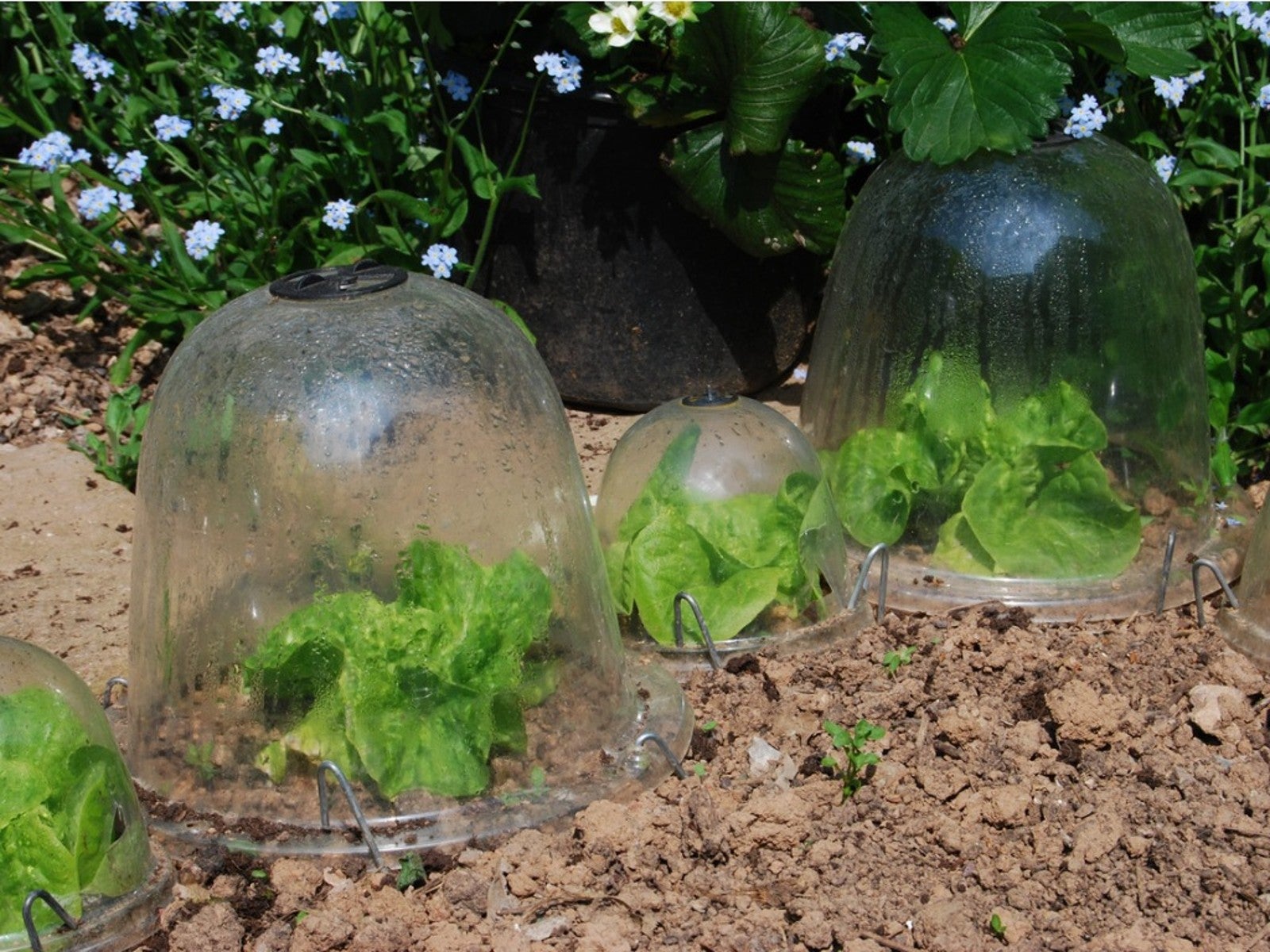Using Hot Caps To Protect Tender Plants


Vegetable gardens are limited by the growing season, but there are things you can do to extend it. Get more out of your veggie patch with hot caps for plants that keep them warm enough to survive early spring or late fall frosts.
What Are Hot Caps for Plants?
Hot caps, or hot hats, for plants are just covers for plants designed to keep them warm. If you have never used a hot cap, you have probably seen them in other gardens. A plastic bucket tipped over a plant might have looked unusual, but now you know that was a hot cap.
The goal of hot caps for gardens is to prevent stress and damage to plants on the edges of the growing season, most often when starting tender new plants in spring. The balance must be right for a hot cap to work. It should be warm enough under the cap to warm the air but not so hot that it causes damage. A hot cap covers a single plant. It serves the same purpose as larger constructions on bigger vegetable beds or farms, like row covers and tunnels.
How to Make Hot Caps for Plants
You can buy hot caps, but they are easy to make out of household items, so there is no need to pay for them. Here are some ideas:
- Cut the bottom off plastic milk jugs or pop bottles.
- Make a tent or teepee out of clear plastic sheeting and stake it into the ground around plants.
- For a single night of frost, you can use a plastic bucket. Don’t use it too long as a cap, as it won’t let in sunlight.
- Use glass cloches to cover plants.
How to Use Hot Caps for Tomatoes and Other Veggies
A two-liter pop bottle or gallon milk jug is the easiest, cheapest way to make a hot cap. Cut the bottom off the bottle and place it over the plant. Push the cut edges into the soil to keep it firmly in place. Pile mulch around the bottom of the bottle for extra warmth and to make the cap sturdier against winds or critters.
The open top allows some ventilation, which is important, but keep the caps. You can put the cap on the bottle at night to hold in more warmth.
There is some variation in effectiveness depending on what you use for the hot cap. In general, they will only provide protection down to about 30 or maybe even 29 degrees F. (-1 to -2 C.). This is enough to protect against an early or unexpected frost.
Sign up for the Gardening Know How newsletter today and receive a free copy of our e-book "How to Grow Delicious Tomatoes".
Only use the caps as needed. They shouldn’t cover plants for longer than about ten days. Leave them on too long and it can get too hot under them. The caps also limit photosynthesis, so you can end up with stunted plants or reduced yields.
If homemade hot caps don’t provide enough protection, look for options in garden stores. You can find waxed paper hot caps that work well. Another choice is a product with water-filled tubes that surround the plant. These provide the best frost protection.

Mary Ellen Ellis has been gardening for over 20 years. With degrees in Chemistry and Biology, Mary Ellen's specialties are flowers, native plants, and herbs.